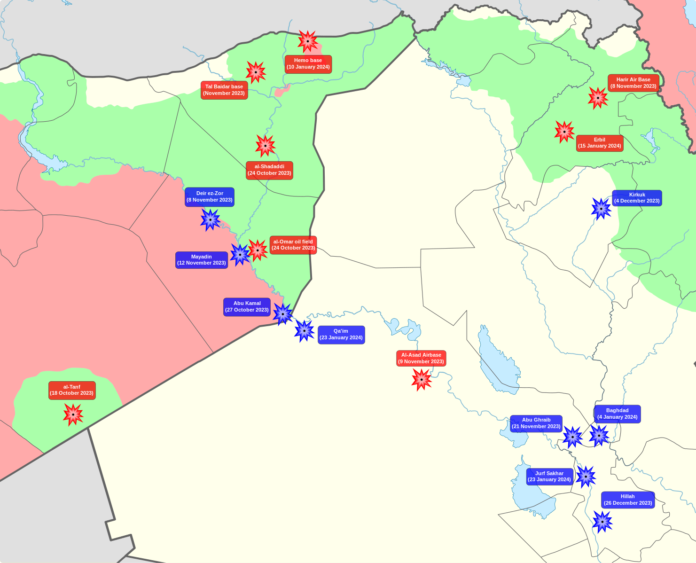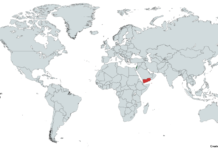Yesterday’s airstrikes against Iranian-backed militias in Iraq mark a notable escalation in the ongoing conflict in the region. These strikes were in retaliation for a series of attacks by these militias on U.S. and coalition forces, highlighting the complex geopolitical dynamics at play.
The latest U.S. military action involved strikes on three facilities used by the Kataib Hezbollah militia group in Iraq. These facilities included the group’s headquarters, storage, and training locations for rocket, missile, and drone capabilities. The strikes were a direct response to a missile attack on a base in western Iraq that injured several U.S. and Iraqi troops, with some American service members requiring evaluation for traumatic brain injuries.
A notable aspect of the recent attacks by the Iranian-backed militias is the use of ballistic missiles, which marks a substantial escalation from their typical use of drones and rockets. These short-range and close-range ballistic missiles, supplied by Tehran to Shia militias in Iraq, have heightened the threat level to U.S. and coalition forces. The missile attack on the al-Asad airbase, which caused injuries to U.S. service members, is a stark example of this escalation.
These incidents are not isolated to Iraq but are part of a broader pattern of conflict in the Middle East. U.S. forces in Iraq and Syria have been attacked over 150 times by Iranian-linked militants since October. In addition to actions in Iraq, the U.S., along with other nations, has conducted strikes in areas of Yemen controlled by Houthi rebels, another Iranian-backed group. These strikes are part of a multinational effort to counter threats to international maritime shipping in the Red Sea, highlighting the interconnected nature of regional security issues.
The U.S. has emphasized that its strikes are retaliatory and aimed at protecting its forces. Secretary of Defense Lloyd Austin has stated that while the U.S. does not seek to escalate the conflict, it is prepared to take further measures to protect its personnel and facilities. This stance reflects a delicate balance of responding to immediate threats while attempting to avoid a broader regional conflict.
The U.S. airstrikes against Iranian-backed militias in Iraq underscore the ongoing challenges in the region. The escalation in tactics by these militias, particularly the use of ballistic missiles, poses a considerable threat to U.S. and coalition forces. The U.S. response, while defensive in nature, indicates a readiness to take decisive action to protect its interests. This situation remains a critical aspect of U.S. foreign policy in the Middle East, with implications for regional stability and international security.
The map shows attacks on U.S. bases in Iraq and Syria (2023–present).
red = Iran-backed strikes
blue = American counterstrikes
Image is licensed under the Creative Commons Attribution-Share Alike 4.0 International license and was created by Clyde H. Mapping.









